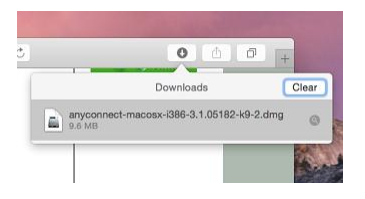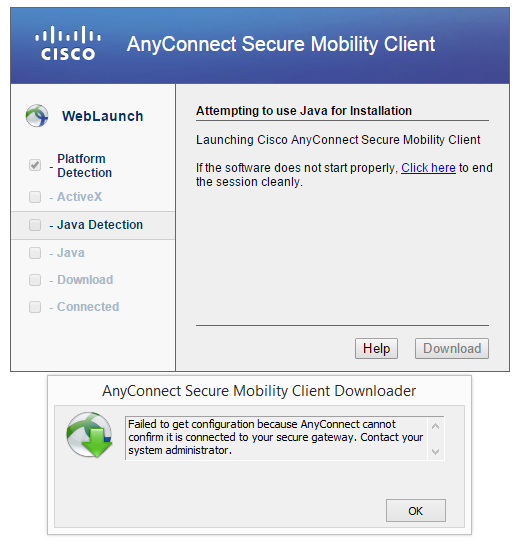| This article refers to the Cisco AnyConnect VPN. If you're looking for information on the Prisma Access VPN Beta that uses the GobalConnect app, see: Prisma Access VPN Landing Page. If you're not sure which service you're using, see: How do I know if I'm using the Cisco AnyConnect VPN or the Prisma Access VPN? |
AnyConnect Secure Mobility Client v4.x: Get product information, technical documents, downloads, and community content.
Download Cisco AnyConnect Secure Mobility Client 4.8.03052 for Windows. Fast downloads of the latest free software! Cisco VPN Client, Free Download by Cisco Systems, Inc. The Shrew Soft VPN Client for Windows is an IPsec Remote Access VPN Client.
On this page:
Primer
This guide will assist with the installation of the Cisco AnyConnect VPN client for Windows (Vista, 7, 8.1 and 10).
Installation
You need administrator level account access to install this software. When prompted with Windows UAC (User Access Control) you need to allow to install this software.
- Download the VPN installer from MIT's download page, Cisco AnyConnect VPN Client for Windows. Note:MIT certificates required.
- Find and double click the downloaded file named 'anyconnect-win-4.5.XXXXXX.exe', where XXXXXX is the sub-version number of the installer.
- On the following screen titled 'Welcome to the Cisco AnyConnect Secure Mobility Client Setup Wizard', click Next.
- When presented with the software license agreement, click I accept on the slide-down menu and click Next.
- Click Install when prompted (Note: the user must be an administrator of the machine to install).
Note: You may be warned the program comes from an unknown publisher and asked to confirm that you want to allow it to make changes to your computer. Click Yes to continue. - When installer begins installation you will see
- Click Finish when prompted to complete installation.
Connect
- Launch Cisco AnyConnect.
- Enter the address of the MIT Cisco VPN:
- Duo (two-factor authentication) required users must use: vpn.mit.edu/duo.
- Non-Duo (single-factor authentication): vpn.mit.edu
- Click Connect.
- When prompted, enter your MIT username and password.
- For Duo users, in the field labeled 'Second Password' you can enter one of the following options:
- push - Duo will send a push notification to your registered cell phone with the Duo Security mobile app installed
- push2 - Duo will send a push notification to your _second registered device with the Duo Security mobile app installed_
- sms - Duo will send anSMSto your registered cell phone; then enter that as your second password (you will fill out the login info twice with this method, first to get the sms code, then to enter it)
- phone - Duo will call your registered cell phone
- phone2 - Duo will call your second registered cell phone
- The one time code generated by your hardware token or the Duo Security mobile app (the code changes ever 60 seconds)
In this example, we've entered 'push' in the 'Second Password' field.
Sometimes methods with lag time, like Call, will time out before allowing you to complete Duo Authentication. SMS and one time codes generated by your hardware token (yubikey) or the Duo Security mobile app are the fastest methods and can help you avoid time-out issues.'How to call different devices'
If you have multiple devices that can use the same method, for instance two mobile phones or two phones that can receive phone calls, you can reference them by different numbers. For instance, to call the top device on your managed devices page (http://duo.mit.edu), you can use 'phone' (for the default) or 'phone1' to call the second phone, you can use 'phone2'.
- In this example, you will receive a push notification on your cell phone. Click Approve.
- Cisco AnyConnect should now present you with the MIT VPN banner and the VPN connection will complete.
See Also
Topics Map > Networking > Virtual Private Networking (VPN)
This page contains links to download and installation instructions for VPN software for Windows Vista, Windows 7, Windows 8, Windows 10.

University of Illinois students, faculty, and staff can use these directions to set up their Windows computers or devices to connect to the Virtual Private Network (VPN).
If you have a guest account, Technology Services recommends VPN, Virtual Private Networking (VPN) for Mobile for on-campus use. Contact your host for help downloading and installing the VPN if you need guest access for off-campus use.
Quick Start
- Download the Windows VPN installation package from WebStore.
- Make sure you get the correct version for your processor. Most people need the x86 version, but if your computer or tablet has an ARM processor, download the version for the ARM processor.
- Windows may suggest you configure the built-in VPN instead. This will not work, install the AnyConnect VPN software.
- Install the software with administrator privileges.
- VPN server: vpn.illinois.edu (vpn.cites.illinois.edu will still work, but we encourage everyone doing a new setup to use vpn.illinois.edu)
- Username: Your NetID
(or, if you're a guest, your guest ID) - Password: Your Active Directory password
(or, if you're a guest, your guest password) - Group: 1_SplitTunnel_Default
(Note: This is the most common choice. See VPN, CISCO AnyConnect, About VPN Profiles for information about the alternatives, such as .)
Detailed instructions are provided below.
Installing the VPN software
- Go to the location where you saved the VPN installation package.
- Double-click on the .msi fileto open the installer.
- You may receive the User Account Control prompt asking if you want to allow the following program to make changes to this computer. If so, click Yes.
- The Setup Wizard will launch. Click Next.
- Accept the End User License Agreement (EULA) when prompted.
- Several windows will show the progress of the installation.
- When all of the installation procedures are complete, you'll be prompted to reboot your computer.
- After rebooting, your installation is complete.
Starting the VPN Software
On Windows 7 and Vista: Your Programs menu will contain a new Cisco folder. Inside that folder is another folder called Cisco AnyConnect Mobility Client, and inside that folder is a Cisco AnyConnect Mobility icon.
The 'hidden icons' menu in the taskbar will also contain a new Cisco icon.
On Windows 8: To find the Cisco AnyConnect software in Windows 8, use the search tool in the Apps feature to search for 'Cisco'. The 'hidden icons' menu in the taskbar will also contain a new Cisco icon.
Logging in
After you launch the Cisco AnyConnect client:
Cisco Anyconnect Download Windows 8.1
First, you'll identify the VPN server and start to connect.
- In the Ready to Connect box, enter vpn.illinois.edu.
- Click Connect.
Next, you'll need to enter three pieces of information.
- Username: Your NetID
(or, if you're a guest, your guest ID) - Password: Your Active Directory password
(or, if you're a guest, your guest password) - Group: 1_SplitTunnel_Default
(Note: This is the most common choice. See About VPN Profiles for information about the alternatives).

Note: If you want to access Library resources without logging in to the Library Gateway, you should change to the Tunnel All profile.
When the VPN connects, a blue window will appear toward the lower right side of your screen.
Disconnecting
When you're done using the VPN connection, disconnect it.
- Click on the Hidden Icon menu (shown as an upward pointing arrow near your system clock).
- Click the Cisco AnyConnect icon.
- In the window that appears, click the Disconnect button.
Troubleshooting and the Advanced window
If you encounter problems using the VPN, contact the Technology Services Help Desk.
Cisco Anyconnect Client Download
The Cisco AnyConnect VPN client gathers information that can help you with troubleshooting speed or connectivity issues. It may be helpful to open the Advanced window while troubleshooting with the Help Desk.
To open the Advanced window:
Anyconnect Cisco Windows
- Click the gear icon toward the lower left corner of the VPN window.
- Choose among the tabs as directed to help your Help Desk consultant with troubleshooting.

Comments are closed.